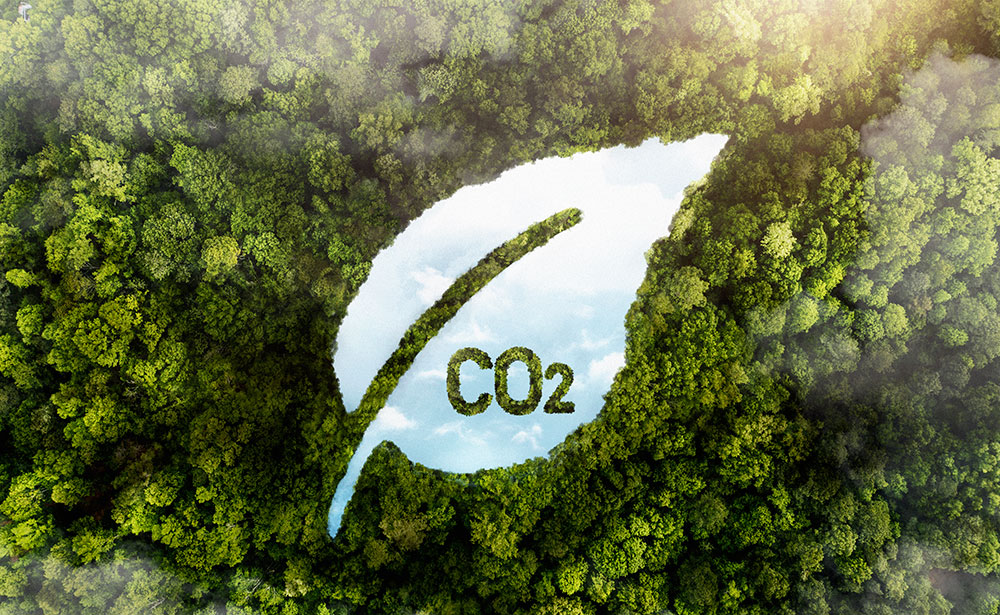Published
2 years agoon

Climate change is one of the most pressing global challenges that our world is facing . The impacts of rising global temperatures are already being felt in the form of extreme weather events, sea-level rise, and the loss of biodiversity.
When the global leaders assembled in Paris in 2015 to negotiate the historic climate agreement, few of them dared to expect that by 2021, more than 60 countries—representing more than half of global emissions—would have committed to achieving net-zero emissions by mid-century. Asset owners and managers are also committed to taking action, with more than $40 trillion in assets under control committed to net-zero portfolios by 2050.
But how did the world’s leaders get to this point, where positive climate change hope pushed out despair?
Institutional, understanding, technological, and leadership innovation aside, the Paris Agreement itself was innovative. While others chastised it for its voluntary nature and non-binding aims, it was based on the premise that, despite a modest first round of commitments, increased scientific evidence, lowered technology costs, and rising citizen demands for action would lead to more ambitious targets in the long run.
Recent research and innovation appear to confirm this notion.
To reason with the 2015 international climate change accord, there are many innovative technologies and approaches already being developed and deployed around the world that are making a real impact on reducing greenhouse gas emissions. These recent yet promising climate innovations are bending the curve and helping the world move beyond the doom.
Renewable energy
Renewable energy is one of the most promising climate innovations. Solar, wind, and hydropower are becoming increasingly cost-competitive with fossil fuels, and as a result, they are rapidly expanding. Renewable energy is expected to account for almost 75% of all new power capacity added globally between 2022 and 2027. This is a significant achievement, but much more needs to be done to accelerate the transition to a low-carbon energy system. Some of the most exciting developments in renewable energy include advances in energy storage, the use of technological advancements to optimise renewable energy systems, and the development of innovative new solar technologies.
Carbon Capture and Storage
Carbon Capture and Storage (CCS) is a technique that gathers and stores CO2 emissions from industrial activities underground. CCS has the ability to significantly reduce emissions from heavy industry, such as cement and steel manufacturing. While the technology is still in its early stages, there are some promising signs of progress. The world’s largest CCS facility, Orca began operation in Iceland in 2021, and several other large-scale CCS projects are currently under development.
Electric vehicles
Transportation is responsible for a significant portion of global greenhouse gas emissions, and Electric Vehicles (EVs) are a key part of the solution. As battery technology continues to improve, the range and affordability of EVs are increasing. In 2021, the total number of electric vehicles on the road touched a whopping 16.5 million, and many major automakers have announced plans to phase out internal combustion engines entirely in the coming decades.
Sustainable agriculture
Agriculture is responsible for a significant portion of global greenhouse gas emissions, but there are several innovative approaches to sustainable agriculture that can help reduce emissions and adapt to the changing climate. These include practices such as regenerative agriculture, which involves building soil health through practices like cover cropping and reduced tillage, and agroforestry, which involves integrating trees into agricultural landscapes to provide a range of benefits, such as carbon sequestration and improved soil health.
Climate-smart buildings
There is more pressure than ever for construction and corporate real estate to work together to cut emissions and strive for a more sustainable future. Several innovative strategies for sustainable construction can help adapt to the changing climate. These include passive building design, which uses energy-efficient building materials and strategies to reduce heating and cooling demands, and the use of innovative materials, such as cross-laminated timber, which has the potential to significantly reduce the carbon footprint of building construction.
A disruptive decade in prospect
While the challenge of climate change can seem overwhelming, there are many innovative technologies and approaches that are already making a real impact. These climate innovations offer hope that we can bend the curve and move beyond the doom.
Certain trends are already showing tremendous potential.
As legislation and policies have helped to mitigate climate change, significant IT companies like Microsoft have already been carbon-zero since 2012 and aim to eliminate all historical emissions by 2050. Other significant firms, such as Nestle, Unilever, and P&G, are taking precautions throughout their supply chain, from production to packaging. Over the last decade, battery pack prices have dropped by over 90%. Renewables have grown at an exponential rate and are currently the preferred technology in many regions. Yet, with an increasing number of government phaseouts of internal combustion engines, subsidies to encourage EV demand, and car companies’ support of EV fleet targets, Electric Vehicle (EV) sales have accelerated. However, there is still much work to be done, and it is crucial that we continue to invest in and develop these promising solutions.
But are we doing enough?
Despite the encouraging trend of adopting sustainability towards climate change influencers, we are still a long way from avoiding even severe repercussions of climate change. Even if promises are completely executed, there is still a significant gap between our present emissions trajectory and one that meets the Paris Agreement’s targets. Communities all around the world are feeling the effects of only one degree Celsius of warming, from excessive heat to uncontrollable fires to withering food crops to disappearing ice. Unless we change our ways, the future world will become progressively unrecognisable.
The silver lining is the determination of climate-focused entrepreneurs to make a difference. Mankind has survived countless disasters through cooperation, determination, and a dash of invention. All of this, and more, will be required to address the climate crisis. With sustained effort and collaboration, we can build a more sustainable and resilient world for future generations.


The Preliminary Findings of Air India AI171’s Tragic Crash Paint a Disturbing Picture


Japan’s Petabit Internet Is Faster Than You can Possibly Imagine


Cursed or Collectible? Labubu Dolls Likened to Ancient Demon


Elon Musk Launches ‘America Party’, But is it A Political Pipe Dream?


IPL 2025 Suspended As India-Pakistan Tensions Escalate


“We Will Make Them Pay If…”: Pakistan’s Aggressive Threats Spark Regional Tensions

